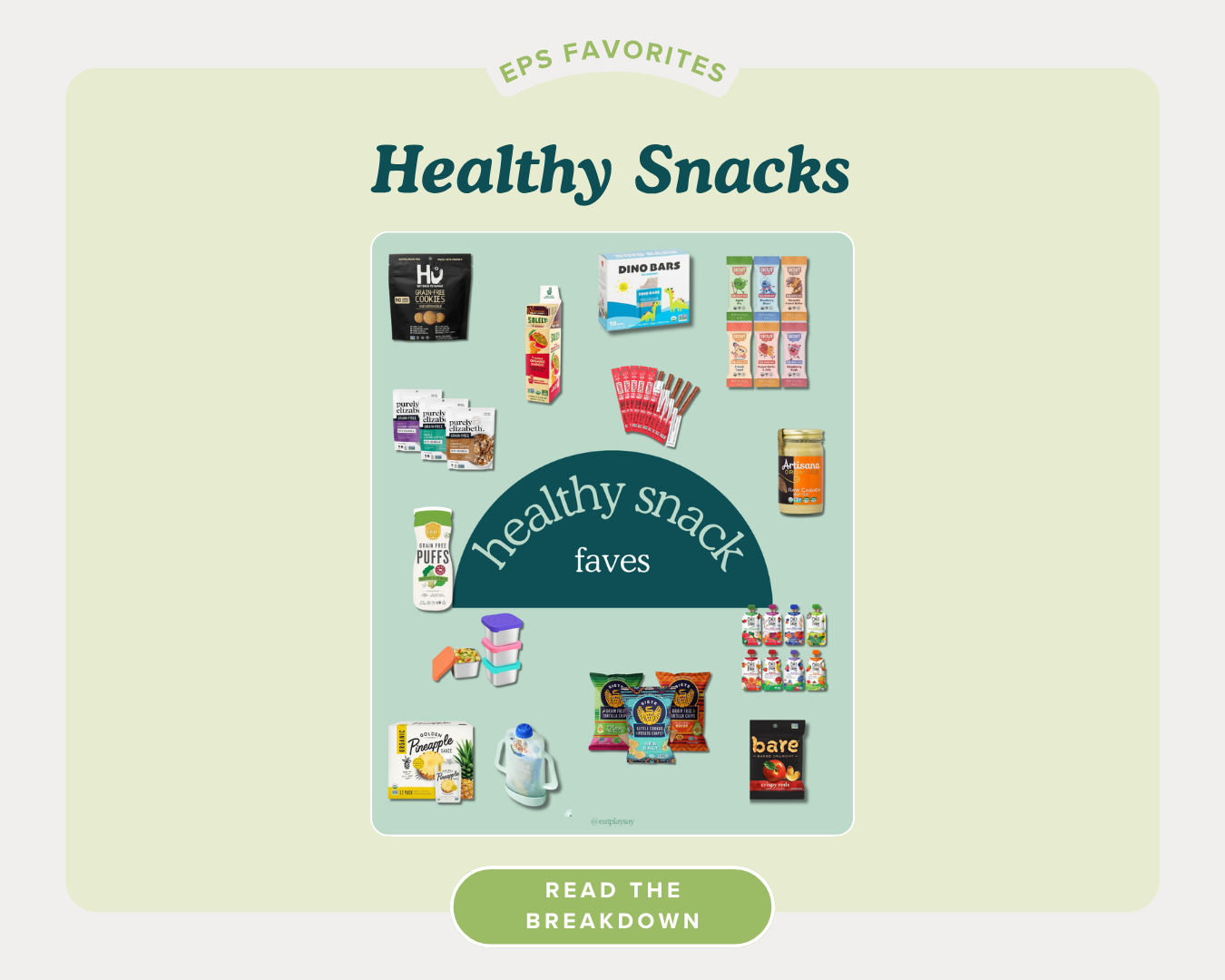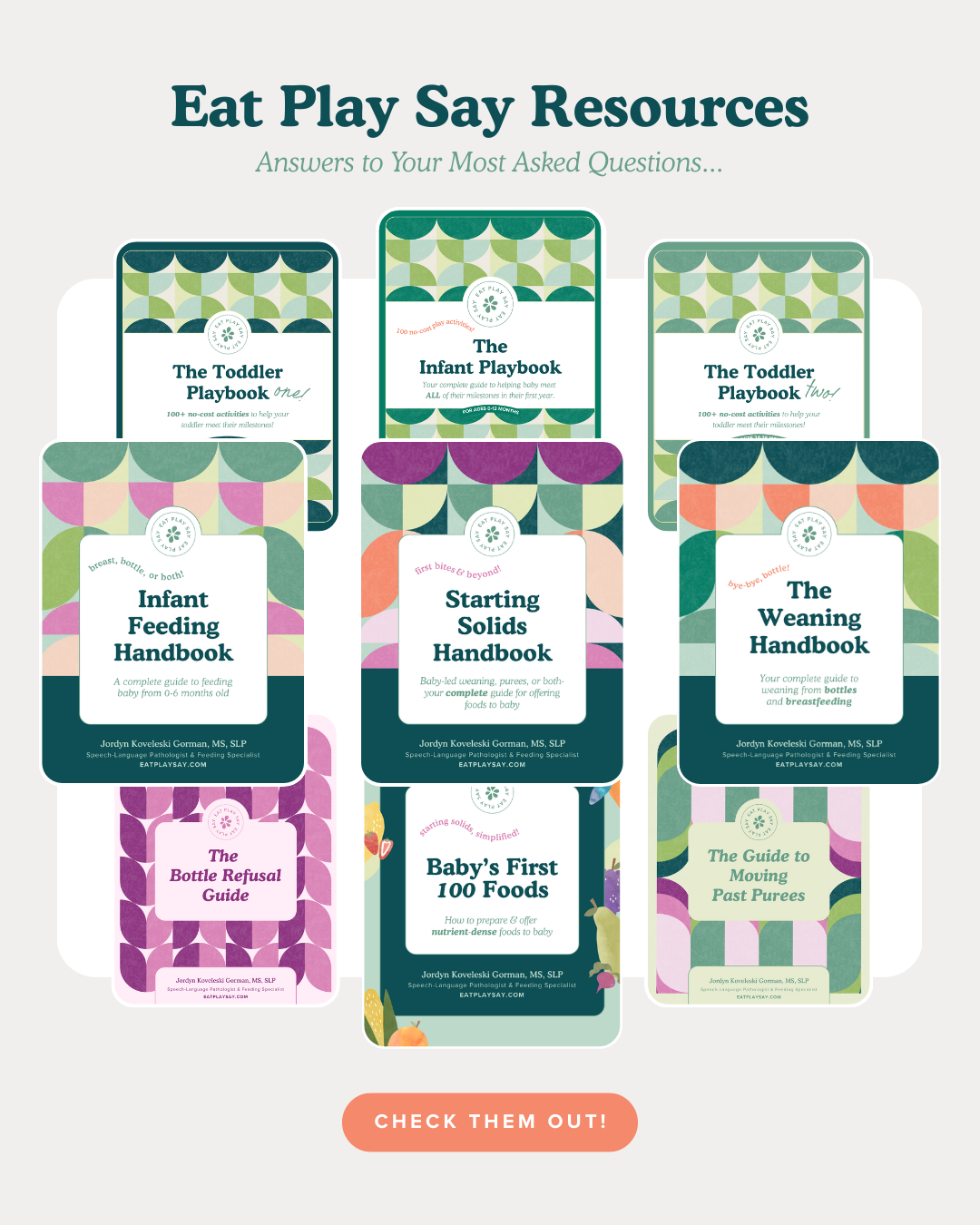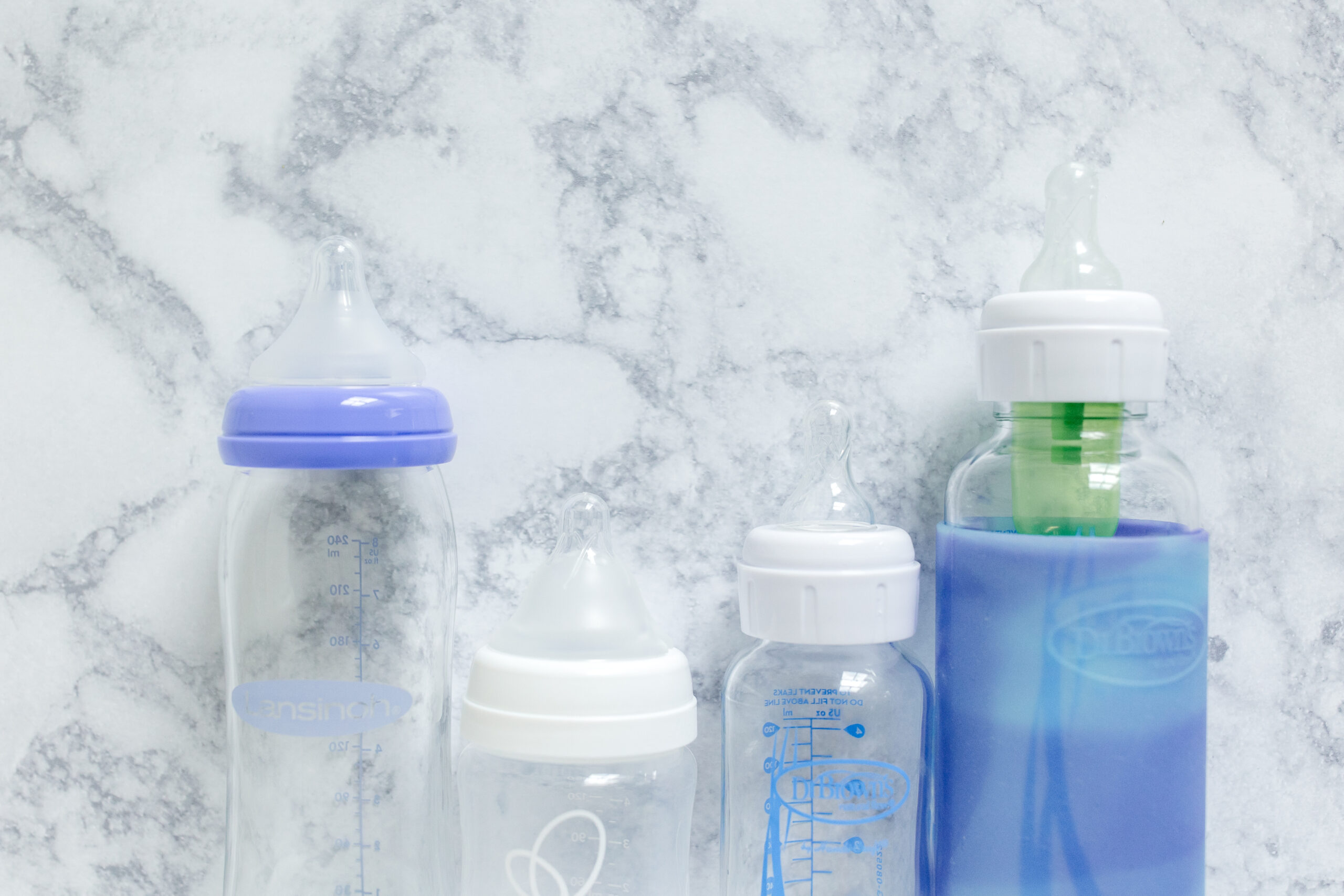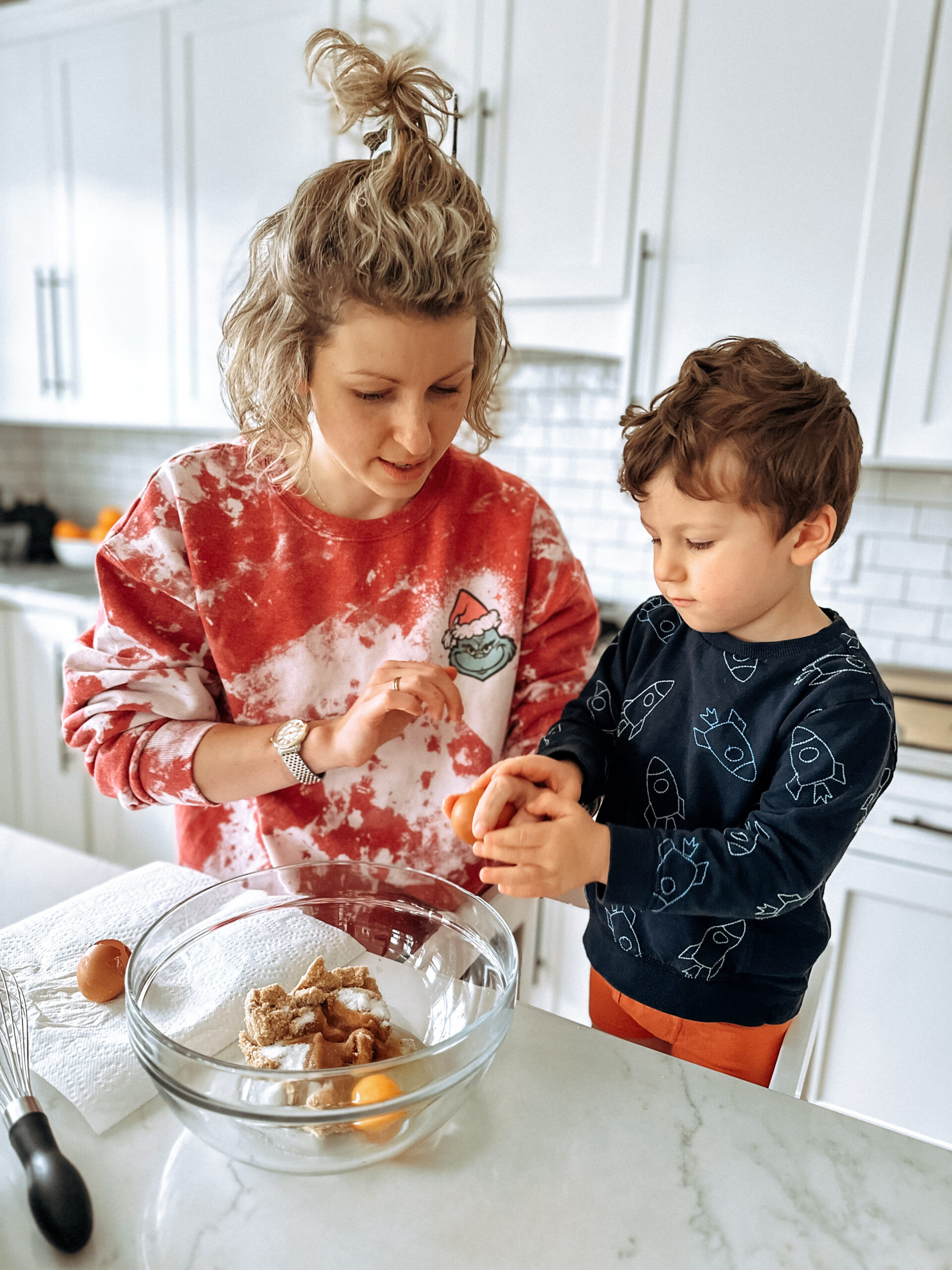This page contains affiliate links. We will receive a commission on qualifying purchases using these links.
Halloween is so exciting with all the littles dressed up in costumes! But how do you handle the Halloween candy? You don’t want to put a damper on the night by taking away all of the candy your little one got while trick-or-treating! I have been there. Here is how we make healthy Halloween Swaps without causing a meltdown.
The Switch Witch
The Switch Witch a made-up character that comes overnight after trick-or-treating and switches out the Halloween candy for better options. She’s something exciting that littles can look forward to, all while you have control over what candy they consume. The thought of taking away candy from your little one probably seems daunting. So, the Switch Witch can make it more fun!
How to Do The Switch Witch
After your little one is done trick-or-treating you have some options of what to do with their candy. You can either let them have a piece of candy or two from their candy bag, or collect the bag and tell them that they can have candy after the Switch Witch comes overnight. You set the boundaries! For us, we usually let our littles have a “safe” candy like a plain milk chocolate or two from their bag. We pick something that isn’t a choking risk and something that has the least amount of ingredients that we like to avoid.
We are upfront about why we limit and swap out the candy. We say things like, “too much can hurt your belly.” “Our family doesn’t eat these ingredients, but some families do!” “These foods have sugar and give us lots of energy, but it’s best to not eat too many.” Being truthful about foods and what they can do to our bodies is important.
In the morning when your little one wakes up, their Halloween bag or basket will be filled with candy from the Switch Witch. You can feel good knowing your little one is getting sweets that you approve of, and they feel special that they get sweets!
Your Switch Witch can even bring in non-candy, fun items like glow sticks, stickers, fidget spinners, bubbles, pencils, etc.
Where to Donate Halloween Candy
With all of the leftover Halloween candy that you may have, you can make Halloween candy donations at several places. Local Food Pantries may take the candy, as well as local Women’s or Men’s Shelters. You can ask your local grocery store if they are accepting food donations, as they often donate food, too. Ask in your local Facebook group where candy is being accepted and you’ll likely get an answer. Some churches will accept candy, too! Candy lasts a long time, so be sure to check many places before just throwing it out.
Ingredients in Halloween Candy
The dietitian on the team helped me break down the facts about mainstream Halloween candy, as well as shed some light on some options or alternatives if parents are interested.
Remember that we don’t label things as “good” or “bad.” Instead, we find it better to use terms like “preferred” or “best to avoid if possible.”

It’s no secret mainstream candy is filled with ingredients that are less than nutritionally optimal. But, it’s even more important to look at these ingredients when it comes to our little ones because their bodies are still growing and developing.
Some of the main ingredients that may warrant a “pass” on the candy for your little ones are:
-
High Fructose Corn Syrup (HFCS) and Corn Syrup
-
Artificial Colors – Blue 1, Yellow 5, Yellow 6, and Red 40
-
Artificial Flavors
-
Artificial Sweeteners – sucralose, aspartame
-
Partially Hydrogenated Oils
-
Preservatives – sodium benzoate, sulfites (sulfur dioxide), polysorbate 60, 65 or 80, nitrites, TBHQ, and BHT/BHA
-
Soy (soybean oil, soy lecithin)
What are the most “ideal” mainstream Halloween candies?
We get it. It’s Halloween, and you don’t want to be the parent that takes all of the candy away! There’s gotta be something for your little one! I’ve been there.
Here’s what we do:
These are not free from all the ingredients listed above, but they are free from artificial dyes and high fructose corn syrup (which, in our opinion, are the easiest to avoid and the best ones to eliminate if you can!).
-
Hershey’s Milk Chocolate (Sugar, Milk, Chocolate, Cocoa Butter, Milk Fat, Lecithin, PGPR, Natural Flavor)
-
Peppermint Patties (Sugar, Corn syrup, Chocolate, Cocoa, Invert sugar, Milk fat, Egg whites, Cocoa butter, Lecithin (Soy), and Oil of peppermint)
-
Brown/Chocolate Tootsie Roll Pop (Sugar, Corn syrup, Cocoa, Partially Hydrogenated Soybean Oil, Condensed Skim Milk, Whey, Artificial and Natural Flavors, Soy Lecithin)
If you want to offer traditional candy to your little one, or leave them with some candies in their Trick-or-Trick bucket, these options may be good to hone in on!
Many candies are choking hazards.
It’s definitely recommended to go through your little one’s bucket of Halloween candy and take out all of the choking hazards.
Anything hard, round, extremely gooey or chewy puts your little one at risk for choking.
Here are some common mainstream candy choking risks:
-
Blow Pops
-
Swedish Fish
-
Gummy worms
-
Candy Corn
-
Gummy Bears
-
Hot Tamales
-
Jawbreakers
-
Jolly Ranchers
-
M&Ms or Peanut M&Ms
-
Milk Duds
-
Reese’s Pieces
-
Sour Patch Kids
-
Laffy Taffy
-
Skittles
-
Tootsie Pops
-
Twizzlers
-
Whoppers
Basically, if it’s hard and round or extremely squishy and sticky, it’s a no-go for little ones under the age of 4-5. Parental supervision with candy (and really all food) is always recommended.
The great debate: “It’s only one night.”
You might have the mindset on Halloween that, “it’s only one night”, so how bad could it possibly be to let your kids have complete free reign of their candy? You can certainly choose to do that if you want! The possible subsequent tummy ache can be a learning moment for your toddler or preschool child and an opportunity for you to have a conversation with them about how having too much candy makes their body feel yucky. It is important not to shame your child or use “I told you so” language, but rather ask them questions about how they feel (if they are old enough) and discuss how a different approach next time might be better for them.
It’s also important to remember that while our children are little, it’s our job to be the gatekeepers of what goes into their bodies. So setting some boundaries around candy consumption might feel like a better option to you. Doing this can help prevent a huge blood sugar spike and subsequent dip that occurs from eating a lot of sugar. (This still happens even with “healthier candies” because they are still high in sugar). It can be tricky to find the right balance, and what you decide to do may depend on your child’s age.
It is recommended that littles under age 2 not have any added or processed sugar. Tthis is backed up by the American Heart Association, U.S. Dept of Agriculture and U.S. Dept of Health. Honestly, at this age, it is likely a bit easier to swap out their candy for healthier alternatives. Especially since they likely don’t know a lot about candy just yet!
Kids ages 2-4 aren’t old enough to manage their stash of candy and make sound decisions regarding how much they consume. They are going to need some boundaries set in place.
Kids over age 4 may be able to manage their candy stash and their consumption, but probably not, and will likely need your guidance.
It is only one night, so if you offer candy, try to keep it to just a few pieces. Maybe talk about other options they can enjoy with that candy, too!
Better for you Halloween candy options:
You don’t have to decide between having fun and letting your kids eat a ton of candy with less-than-ideal ingredients. There are plenty of sweet treat options that are free from all of the concerning ingredients previously listed.
Here are some pre-packaged options we like:
Our Healthy Snack Faves also has a ton of great pre-packaged snack ideas for you and your family!

A Favorite Halloween Treat Recipe
Homemade Nut Butter Cups
Ingredients:
1 cup chocolate chips
3 Tablespoons melted coconut oil
½ cup natural, creamy peanut butter (or almond/cashew butter)
¼ cup pure maple syrup
Servings: Makes about 12 regular-sized peanut butter cups, or 24 mini peanut butter cups, depending on how thick you make your layers.
Directions:
-
Line a regular-sized or mini muffin tin with paper or silicone liners.
-
Melt 1 cup of chocolate chips and 1 Tablespoon of the coconut oil together either in the microwave or on the stovetop until smooth and creamy.
-
Use a spoon to pour the melted chocolate into the bottom of each of the muffin liners. Use just enough to fully cover the bottom, about 1-2 tsp for regular-sized. (You will have chocolate left over for the top layer).
-
Place muffin tin in the freezer for about 10 minutes to let chocolate harden.
-
While the chocolate hardens, mix together ½ cup peanut butter, ¼ cup maple syrup and and 2 Tbsp coconut oil and melt together in the microwave or on the stovetop, until mixture is pourable.
-
Remove muffin tin from freezer and distribute peanut butter mixture evenly on top of chocolate layer.
-
Place muffin tin back in freezer for 5 minutes.
-
Pour remaining chocolate mixture on top of peanut butter layer. You can sprinkle the top layer with sea salt, chopped peanuts, sprinkles, or whatever you want.
-
Place muffin tin back in the freezer for about 30 minutes to set and then you can store in the fridge.

Tips for Trick-Or-Treating
Last, but not least, make sure you feed your children a nutritious, high protein meal before the fun begins! This will help balance their blood sugar through the evening and keep them satiated so they aren’t digging into their candy bucket while hungry and treating it as dinner. Keeping your little ones hydrated is also important. Skip the sugary drinks for the night if you can, and pack them a bottle of water.
Above all, don’t stress too much, enjoy the night with your children and make some great memories! Happy Halloween!
All the feeding support you need:









